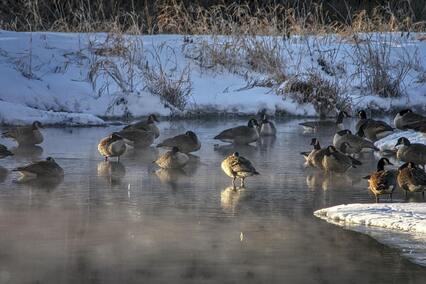 Seems fitting to talk about wintering geese especially after a blizzard crippled most of the country and a polar vortex so cold that even Miami, Florida reached temperatures in the 40’s on Christmas Day. As the peak of migration season has come and gone for migratory birds heading south, you can bet that pretty much any waterfowl species hanging around isn’t going anywhere. Typically, resident geese or birds that have found all they need to survive the winter have settled in and already started leaving their mark on your property, local agriculture fields, and of course becoming a hazard for nearby airports. Normally simple hazing techniques prove to be very effective, however when dealing with migratory birds in the winter most techniques are either ineffective or have minimal success mainly due to low levels of energy, cold temps, and familiarity with non-lethal hazing techniques used on them all year. Below is a list of techniques that we at Loomacres Wildlife Management have found effective and ineffective when using non-lethal techniques to haze wintering Geese.
When dealing with wintering geese that are causing property or agricultural damage and becoming a hazard to airport and aviation safety our staff at Loomacres Wildlife Management find the most effective techniques for hazing nuisance geese is the use of Border Collies, Propane Cannons, and Falconry. For more information or to speak with one of on staff biologist please fill out the contact form below and someone from our company will reach out as soon as possible.
0 Comments
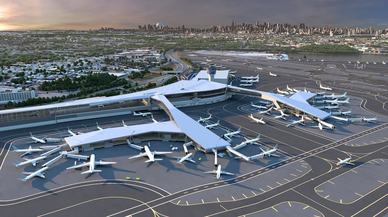 Airports conduct Wildlife Site Visits performed by Certified Airport Wildlife Biologist for several reasons. For example if there’s an upcoming project like a new perimeter fence or retention pond, new habitat attractants, recent wildlife strike, or if the airport is unsure whether to conduct a Wildlife Hazard Assessment and update their Wildlife Hazard Management Plan. An Airport Wildlife Hazard Site Visit is executed from one to three days and is intended to get a quick evaluation and analysis of the Airports current Wildlife Hazards, Mitigation efforts, policies and procedures and future risks. When a Certified Airport Wildlife Biologist conducts a Site Visit, the biologist may also provide the airport with Wildlife Mitigation suggestions for immediate action if necessary or to recommend a full Wildlife Hazard Assessment to be performed. If an airport already has a Wildlife Hazard Management Plan (WHMP), airport management can use a Site Visit to investigate wildlife strikes to aircraft or see if the Plan needs to be updated. Airports can also use a Site Visit to decide if a proposed land use in the vicinity of an airport will increase the potential for wildlife hazards at the airport. For non-certificated airports that do not have a Plan, a Site Visit can provide a suitable basis to develop a basic WHMP. At Loomacres Wildlife Management our team of biologist focus on the following key areas when conducting a Site Visit
Data in the field is collected from several different observation spots on the airfield and at different times of the day to ensure all areas are covered and information is recorded. Once the Biologist has collected and reviewed all findings from the above listed focus points, a full summary and analysis is submitted to the Airports Operator. From this report the airport can take the information at hand provided by Loomacres and make a quick and informed decision. For more information or to schedule a Wildlife Site Visit with one of Loomacres Certified Airport Wildlife Biologist please CLICK HERE or fill out the form below and someone will contact you shortly. Site Visits: https://www.airportwildlife.com/site-visits.html  3 Ways Airports Can Save Money After the travel ban of 2020 and now in the post Covid 19 business world some industries that depend on travel or tourism were left out to dry and may never recover. The lack of revenue has impacted budgets and spending for just about every airport in this country. Airport managers and leadership teams are reviewing everything in the budget and looking to cut cost and scale back. Here are a three ways Airport Managers can save money and still get top notch service without sacrificing the safety of aircrafts and passenger.
For additional information or to speak with a Loomacres staff members please fill out the contact form. 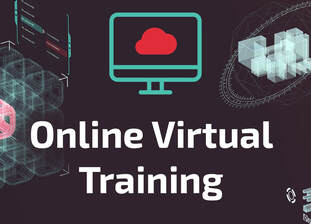 It’s hard to believe that two years ago the world started dealing with the spread of the Covid-19 pandemic that is still lingering as we enter 2022. The way we travel, eat at restaurants, conduct business has all changed dramatically, even our kids schooling, sports, and social lives have altered all with the one thing in mind and that is safety! Airports around the world and especially here in the United States have been meeting and planning for potentially another shut down. With new strains of C-19 (Delta and Omicron variants) spreading and a huge spike in positive test results, we could be in for stricter travel mandates, or even travel bans to help prevent the spread of this virus. In late 2019 the FAA granted Airport Wildlife Biologists and privately owned companies like Loomacres Wildlife Management temporary approval to conduct WHMP reviews and P-139 Airport Wildlife Hazard Training and Identification courses virtually. By utilizing platforms like Zoom, Join.me and Microsoft teams, required Airport Personnel have been able to meet the annual requirements for Wildlife Hazard Management Training. When the pandemic first hit and shutdown was in place as well as the travel ban, we noticed several airports put training on the back burner, rightfully so. However, as the ban started to slowly lift and airports needed to fulfill their Wildlife Training requirements, virtual training took off. After a year of refining our curriculum and material, here are some of the reasons Airports have chosen to do their P-139 Wildlife Hazard Training as well as their Wildlife Hazard Management Plan Review online rather than in person.
To book your airport’s online training or to speak to someone at Loomacres Wildlife Management please fill out the fields below and someone will contact you in a timely manner. 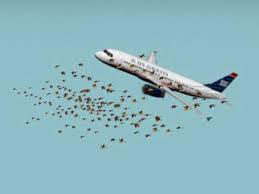 Every year airline companies in the U.S. as well airports and aviation companies are paying billions of dollars due to wildlife strikes! Building a plane isn’t cheap and repairing a plane after it collides with an animal like a deer or goose isn’t like fixing a car headlight. There have been several recent high profile newsworthy events of wildlife strikes. Former Vice President Mike Pence and Airforce 2 making an emergency landing due to a bird strike, and the most famous or memorable was the US Airways Flight 1549 landing on the Hudson River after colliding with Geese. This was notorious and important for several reasons. One it made Captain Sully Sullenberger a legend and very wealthy, two Tom Hanks won an Oscar for his performance in Sully but third and most important for the Wildlife Management industry and for every airport in the world, it showed that a bird strike can happen anywhere anytime. Now some bird strikes are going to happen no matter what, however many of collisions can be prevented by having an up to date and well executed Wildlife Hazard Management Plan and outsourcing to professionals like Loomacres Wildlife Management. (Learn More Click Here) The FAA has always addressed the importance of wildlife collisions being prevented by airports. Certain policies, procedures and regulations are mandatory for airports to comply with to ensure safety for airlines, and passengers. Below are a few mandatory items that must be implemented or complied with for airports that are classified under the FAA Title 14 Part 139.337 (e) & (f).
These are just a few examples of what the FAA has instituted for all airports that fall under the classification of Title 14 Part 139. These policies and regulations are in place to keep airport managers accountable and proactive in preventing wildlife strikes with aircrafts because at the end of the day it’s the Airport Manager who is liable and responsible for safe take off and landings. Information is key to preventing future risks and collisions. All wildlife strikes should be reported and logged in the FAA Strike Database. For more information or to schedule a WHA, WHMP Review, or Wildlife Hazard Management Training please fill out the field below. 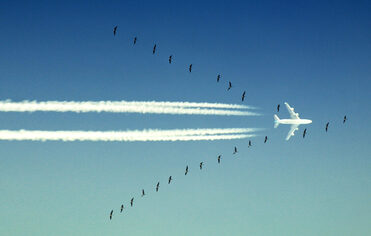 Every year the FAA requires commercial airport staff and personnel to fulfill the training requirements for an airport wildlife biologist conducting wildlife hazard assessments under Title 14, Code of Federal Regulations, Part 139 and FAA Advisory Circular 150/5200-36A. In non-technical terms the FAA mandates that required airport staff complete an 8-hour training class on wildlife hazard management and wildlife identification. After completing this course annually your airport staff will receive the necessary certificates of completion. When selecting a company to train your staff here are 5 -things to look for when choosing your P-139 Wildlife Training vendor. 1) Wildlife Hazard Management Plan Review: Having a qualified airport wildlife biologist evaluate and update your WHMP benefits both the airport manager and the airport staff. Your vendor should be requesting a copy of your WHMP to review and find any changes or updates that need to be made or suggestions on action items that need more attention. 2) Customized Training Curriculum: Often our new clients outsource their training to us at Loomacres Wildlife Management because their current vendor has been teaching the same topics the same way for years. Choosing a vendor that customizes their curriculum and training seminar based on your airports WHMP, strike history for the past 10 years, and new hazards and wildlife attractants that may be outside the airport fences is crucial. Let’s be honest, your staff will like this too and benefit greatly. 3) Virtual Training Options: With Covid-19 changing everything, the FAA granted certain companies to perform Part 139 Airport Wildlife Trainings virtually to ensure the safety of everyone. Over the past 18 months virtually training has been an adjustment but extremely efficient. This also comes in handy when a new hire starts and needs to attend a training to become certified and trained for wildlife hazard management duties on your airport. It is also a luxury to complete your training from the comfort of your office, home, or airport conference room. 4) Firearm & Pyrotechnic Safety Training: Having an NRA Certified instructor provide your staff with onsite (Local Gun Range) firearm training is important on a few levels. Having peace of mind that your staff is trained on how to properly handle a firearm, accuracy training, and safety should be on the top of your list. This also goes for training your staff on how to properly use pyrotechnics in the field by having your instructor do live onsite demonstrations. 5) Advanced Airport Management & BASH Training: These multi day courses that are in person with airport staff and airport managers from all over the country will focus on advanced wildlife management techniques for airports. This class is broken up into classroom seminars, Q&A with industry experts, and extensive hands-on training for the following topics. Trapping Techniques
At Loomacres Wildlife Management our Airport Certified Wildlife Biologist that provide our clients with virtual or in person training classes pride themselves on the above-mentioned items you should be looking for when selecting a vendor. We believe our training and training staff is the most up to date and advanced training in the industry. Don’t believe us? Click Here to see what our clients have said. If you would like to speak with a biologist or to learn more about our training program, please fill out the contact fields below or click on the link to our website. 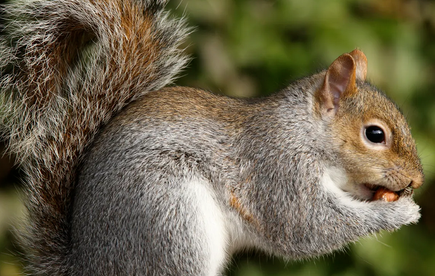 Ok homeowners, with the world seemingly divided on just about every major issue there is one thing we can all agree upon and that is our hatred for squirrels, and they are annoying! There I said it. With winter upon us for most of the country the time where squirrels seek shelter from the elements and to begin their nesting phase like a pregnant woman nearing her delivery date. Now I am sure we all remember the iconic squirrel in the Christmas tree scene of Christmas Vacation that plays on repeat during this holiday season and yes that is a possibility but here are four tips to help prevent any unwanted winter guests in your attic and home. 1. Check Exterior: No better time then checking the exterior of your home when its cold outside and you’re hanging holiday lights. If you fear heights, we don’t recommend this, but it should be done. Check for holes in your roof, siding, or access in your chimney vents where squirrels, birds, and other critters could possibly enter your home. If a point of entry is found simple DIY exclusion work should help or contact an expert (Click here for expert) 2. Remove Food: If you have bird feeders or feeding stations for wildlife in your back yard this is for you. Watching birds feed in the winter or waking up to deer, rabbits and other wildlife on a winter morning is an absolute welcome sight and yes everyone and everything needs to eat! However careful what you wish for. If you store your seed or feed in your garage or shed, chances are something is coming for it. Try keeping it in a storage container outside and sealed with a brick or cinder block on it to help weigh it down. Click here for Image 3. Trapping: This may not be for everyone, but it is highly effective and can be fun. There are various types of traps from lethal to non-lethal that can rid your property of squirrels. We highly recommend Comstock Custom Traps. As a specious overall they really aren’t that hard to trap especially for beginners. However, we advise you to contact your state regulations on either daily amounts or removal and replacement regulations. Click here for Traps 4. Hunting: Which ever side of the aisle you are on when it comes to hunting it doesn’t matter because hunters serve a significant purpose when it comes to population control and effectiveness. Typically, animals like squirrels invade homes because they have run out of natural resources in their own habitat and have no other choice. By thinning out a dense population of squirrels in an area you are preventing a future issue. We recommend reviewing your state and local regulations to make sure no laws are broken but this is a quick way to solve any issue. For more information or to contact an expert at Loomacres Wildlife Management for a free consultation please click here and someone will help you as soon as possible.
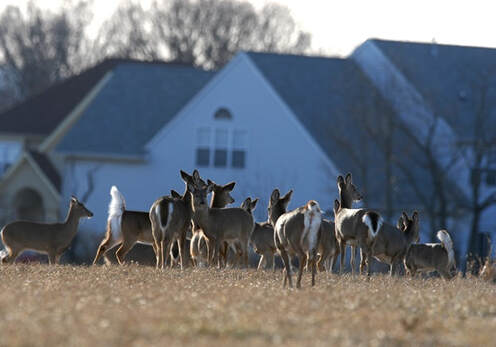 In the industry of wildlife management or wildlife control or wildlife removal, whatever you want to call it, the phones have not stopped ringing lately! This could be contributed to several factors but as we as a race continue to put our human thumb print on this country with land development, forestry, industrial expansion, and rising populations we are literally giving wildlife no where to go other than to live amongst us. Its not uncommon to see deer, geese, turkeys, coyotes, etc. living in suburban neighborhoods that used to be a wood lot or wetland. So, as we expand and continue to develop this problem grows and grows and grows. With fall arriving so does hunting and trapping season for active sportsmen. However lately due to the lack of access to land the sport has been in a rapid downward spiral even with a spike last season in license sales with many Americans not working due to Covid -19. Here is a list of reasons everyone should thank a hunter/trapper or better yet give them permission to access your property because without them the following would be much worse.
In the history of hunting and trapping many sportsmen fight the battle of either animal lovers harassing them while they hunt or new laws and regulations making it harder and more expensive to get out there but there are many reasons why if you are a property owner you should reexamine why you don’t allow hunting or trapping on your property! These are just a few of the many reasons you should not only allow it but be thankful for a sport that is heavily declining due to lack of access. So, the next time someone knocks on your door asking for permission to provide food for his family or help control the numbers of overpopulated wildlife, give it a second thought before you slam the door. 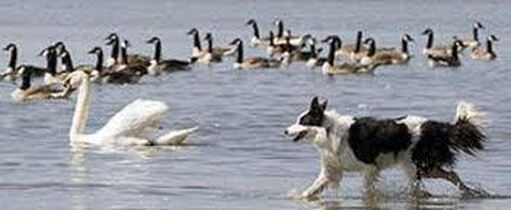 With the fall migration of Canada Geese either just starting in some states or just about to kick off it is important to educate yourself on some the options you have with dealing with these hazardous flocks of birds. First off why are they hazardous? Simply put they wreak havoc on farm fields, damage golf courses, pollute HOA retention ponds and common area, parks and most importantly air travel safety! It’s one thing to deal with a resident flock of geese that nests, eats, and lives in a small area that you can depredate when needed or haze to keep them moving but when the fall migration starts, and thousands of Geese come through all at once they can leave quite a mess and be extremely hazardous. Here are a few methods we use at Loomacres Wildlife Management to fight the battle of migratory geese from setting up shop in places they are not welcome.
Whenever our certified Airport Wildlife Biologist implement a technique to deal with either nuisance resident Geese or a flock of Migratory Geese we factor in several variables and take into consideration of the overall goal defined by our clients. We have found over the years the use of multiple techniques implemented in each case is results in the most effective outcome. If you are having issues and would like a FREE CONSULTATION or to chat with one of our staff members please CLICK HERE and fill out the contact form and someone will reach out to you and we will be glad to help. 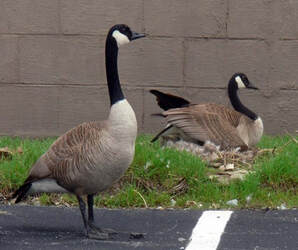 Recently we at Loomacres Wildlife Management have been flooded with all sorts of calls and online requests for wildlife removal help. In Phoenix, AZ for example we have been at war with pigeons taking over people’s attics, their roof tops, and decimating yards and sidewalks with feces. In New Jersey and New York, we have had several nuisance geese issues on golf courses, town parks, and of course residential areas. The list keeps going and going but we do not mind as long as its what we do which is Wildlife Removal not Pest Control. Though they are similar in many ways there is a few big differences you should know before you reach out to a pest control company or a Wildlife Removal or Wildlife Management company like Loomacres. Pest control is defined by the process of preventing or managing any unwanted animal from invading your home or place of business. Pest Control typically uses spray techniques and chemical repellents or deterrents to keep pest or unwanted creatures away. Many pest control cases include dealing with insects, mice, rats, roaches, bats in the attic, etc. from taking residence in your home. So, if you are having trouble with bees, ants, or small rodents give your local pest control guy a call. Wildlife Removal or Wildlife Management is simply using techniques and equipment like trapping or depredation to remove an animal that has become a nuisance by either causing a threat to humans, pets, agriculture, or livestock. Most cases when dealing with a nuisance animal a depredation or removal permit is needed in which we will obtain from the U.S. Fish and Wildlife Service. These nuisance animals typically are causing damage to crop fields or gardens, property structures like barns and sheds, or other animals. An example of this would be if you had a nuisance fox, coyote, raccoon, bear, mountain lion etc. that was eating your chickens, or your cattle and needed to be removed. Nuisance Geese that are over grazing in your yard or in your local park. We have worked with multiple municipalities when a deer herd is out of control and causing vehicle accidents and damage to residential property. One very popular service lately is crow management or crow hazing which for some cities in the U.S. is out of control (Click Here For Full Story) I am sure you can see the difference now. Wildlife Removal is a growing need especially in growing cities and suburbs. As we continue to develop land and continue to minimize wildlife habitat, more and more cases of nuisance wildlife will occur. If you are currently having issues with Nuisance Wildlife that needs to be removed or managed please CLICK HERE and fill out our contact form and someone will reach out to you shortly. |
Sales & Marketing
|
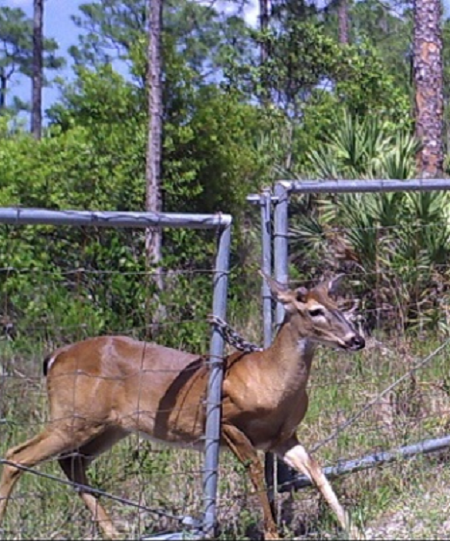
 RSS Feed
RSS Feed